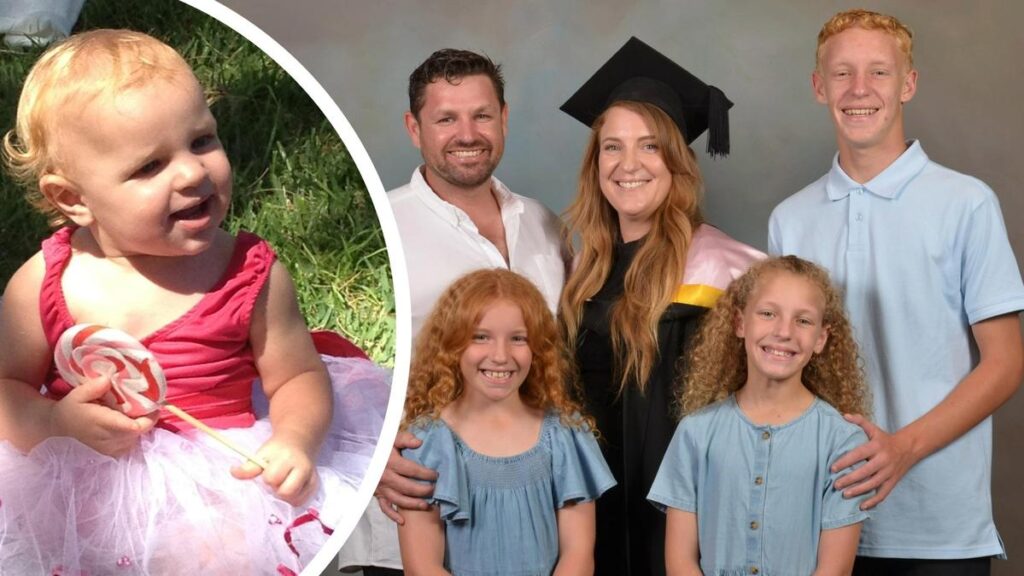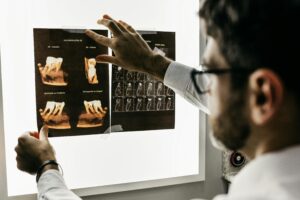
Melanie Andrews with her husband and thee children Chase Paisley and Eden. Her daughter Mylee, right, suddenly dies in her sleep.
When Melanie Andrews kissed her 15-month-old daughter, Mylee, goodnight, she never imagined it would be the last time. The Perth mother awoke to a nightmare when she discovered that Mylee, with her strawberry blonde hair and big blue eyes, had died suddenly in her sleep without any warning.
“We put her to bed a happy, healthy little girl, and when I went to get her in the morning, she had died sometime during the night without sound or warning,” Andrews recounted. This devastating event has propelled her into a mission to save other families from experiencing similar heartbreak.
A Mother’s Journey from Tragedy to Advocacy
Mylee’s sudden death was initially classified as unexplained, leaving the family in a state of confusion and grief. For three years, they lived without answers until testing revealed that Mylee had an undiagnosed immune condition exacerbated by a bacterial infection. “You live with guilt every day wondering if you could have done anything different,” Andrews said. “To know that her death was preventable added another layer of complexity.”
This revelation became a turning point for Andrews, who decided to channel her grief into action. “I realized that if I wanted to see a change, I had to be the change,” she explained. Andrews enrolled at the University of Western Australia, where she completed a Bachelor of Biomedical Science with honors and is now pursuing her PhD.
Researching the Unexplained: A Quest for Answers
Andrews’ doctoral research focuses on the potential links between certain bacteria, immune responses, and sudden unexplained deaths in childhood—a rare and devastating occurrence that continues to baffle medical experts. “It rocked our entire world. It changed the person that I am and what I thought of life,” she said, reflecting on the impact of Mylee’s death.
Her work aims not only to find answers but also to prevent other families from enduring the same pain. “With our other children, it took away the innocence that they were just going to grow up one day,” she noted. “It really gave me drive to find answers for other families. My ultimate goal was that no family ever felt what we did and never had to endure losing a child because it is the worst possible pain that you could imagine.”
The Importance of Red Nose Day
As Red Nose Day approaches, Andrews shares her story to raise awareness and funds for Sudden Infant Death Syndrome (SIDS) research. “Getting involved and supporting Red Nose Day really supports families like mine who have lost children to get answers, and it supports other families who have little ones. Hopefully, we can prevent them from dying in the future,” she emphasized.
Red Nose Day has become a beacon of hope for many families, providing crucial funding for research and support services. Andrews’ involvement underscores the importance of community and scientific effort in tackling the mysteries of unexplained childhood deaths.
Looking Forward: A Legacy of Change
Melanie Andrews’ journey from personal tragedy to scientific inquiry highlights the transformative power of grief when channeled into a cause. Her story is a testament to the resilience of the human spirit and the profound impact one individual can have in the quest for knowledge and prevention.
As she continues her research, Andrews remains hopeful that her work will lead to breakthroughs that save lives. “Mylee was such a happy, cheerful, bubbly little girl. She was really mischievous and full of life, and we would never have had any indication that anything was wrong or that she was going to die in any way,” she recalled. Her dedication ensures that Mylee’s legacy will be one of hope and change for countless families.






